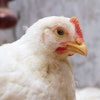In 2014, it is China’s turn to face the dim prospects of low meat prices and high feed cost -- not unlike most of the Western world in 2013. And naturally, the cycle of high and low prices will continue, worldwide, keeping nutritionists busy.
From a nutritional point of view, I have always advised that when feed prices are low, it is then the best time to start thinking of ways to rationalize feed costs. But, such advice is seldom heeded when profits soar. Thus, we are once more faced with the problem of executing delicate "live" nutritional exercises during times of crisis, without having the luxury of trial-and-error.
The following six steps are my list that I use when reviewing any nutritional program with the goal of making feed less expensive in times of acute increases in feed ingredient prices. Surprisingly, the same issues faced in many Western clients plague my Chinese ones, and all can be resolved by the following:
1. Reduce excess nutrient margins
Nutritionists generally insert generous safety margins in most feed formulas, especially during times of high profits. This is particularly true for amino acids, and it is done to ensure maximal productivity under a number of different commercial conditions. Reducing these excesses involves the use of a qualified nutritionist that will create a tailor-made nutritional program for a specific farm, taking into account genetics-facilities-labor-goals.
2. Match nutrient specifications to actual performance
Many involved in formulating diets are often satisfied by using feed nutrient specifications provided from genetic companies or other interested parties without adjusting them for actual performance achieved in a specific farm. It is important to keep in mind that such "book values" refer to maximal performance under near ideal conditions. But, what happens, for example, in the case of setting a goal of maximizing yield per square meter without paying much attention to individual growth? Do we still need such high-density diets?
3. Re-evaluate additives used
Some additives improve performance, others enhance health, yet others are there just to ensure against a potential problem. But, under "crisis conditions," it is best to keep only additives that provide the best return on investment or highest security and remove the rest. In some cases, removing all additives might be the only way to stay on the break-even line.
4. Re-think about vitamin-trace mineral premix inclusion levels
These premixes are quite inexpensive when viewed as cost per ton of feed, but margins on animal prices can be equally thin. So, making sure the right vitamins are used at the right amounts, and no surplus vitamins are included, will help keep feed cost down. This is even more true in the case of trace minerals, which are more often than not supplied in excess of requirements.
5. Challenge conventional ingredients
Using more of certain unconventional ingredients, increasing a bit the fiber content, adding a little more oil or fat and exploring novel sources of energy or protein previously considered not-so-prime will cause feed cost to drop. Indeed, performance may drop in some cases, but this might be secondary to staying in business until profitability returns to positive levels.
6. Change focus from feed efficiency to cost of feed per gain
Feed efficiency index is a generic useful index that provides an indirect measure of profitability. It assumes feed cost remains the same, while animals adjust feed intake to energy concentration. But, finding the best combination of feed cost versus feed intake may lead to some surprising facts. For example, when fiber-rich ingredients are cheap, using a low-energy, low-cost diet might be the best way, even though feed efficiency will be high. The opposite is true, an energy-dense, yet expensive, diet might be the best solution when cereal prices are high, because of the lower feed intake and improved feed efficiency. At the end, it is best to consider cost of feed per gain and not just feed per gain.

















